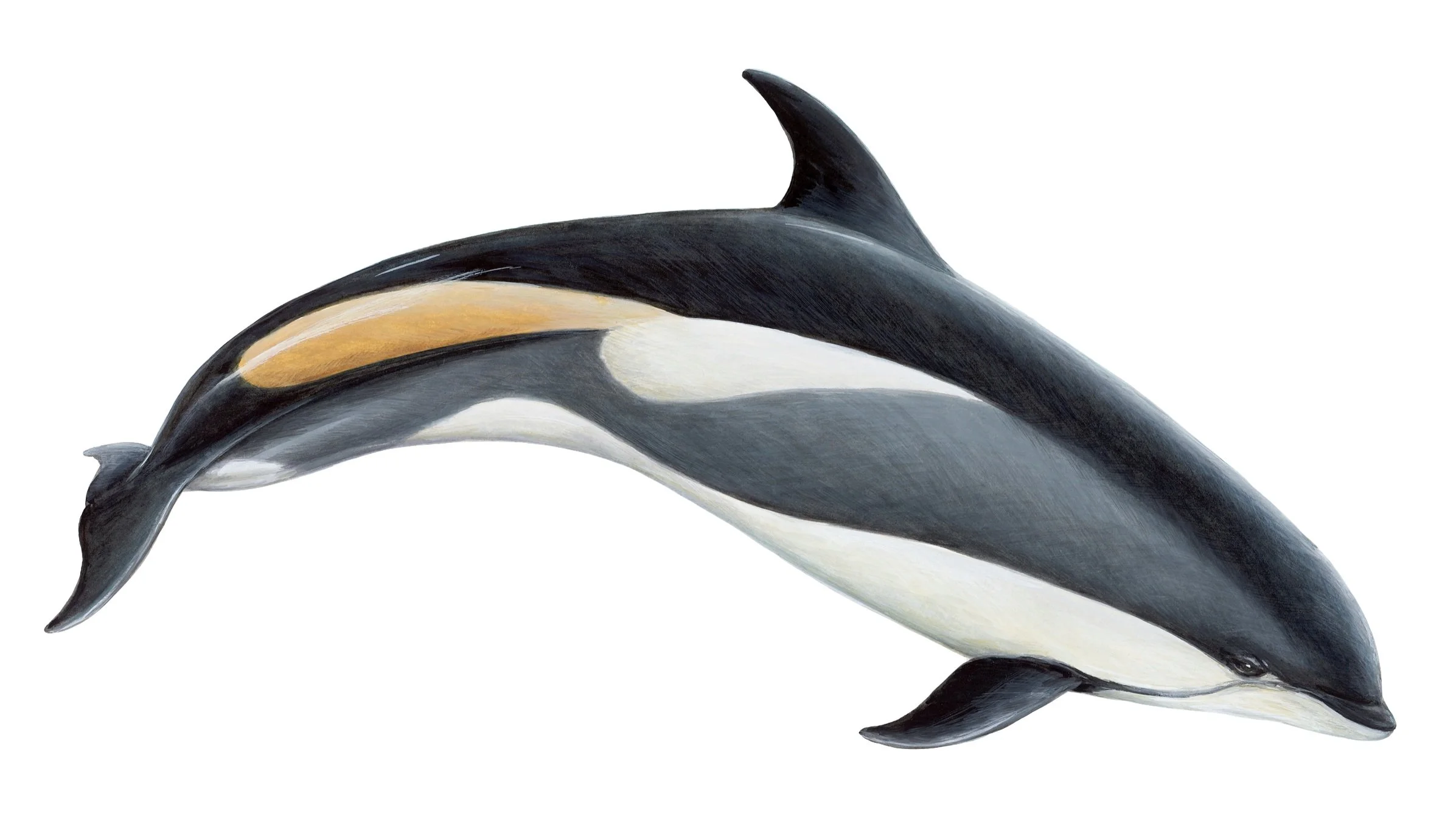Atlantic White-Sided Dolphin
(Lagenorhynchus acutus)
Leiftur, Dauphin à flancs blancs de l'Atlantique, Delfín de flancos blancos del Atlántico, Atlantischer Weißseitendelfin
Atlantic white-sided dolphins are one of the most colourful and energetic dolphin species in the North Atlantic. They are known for their striking pattern of dark grey, white, and yellowish patches along the sides, and their tall, curved dorsal fin. These dolphins often travel in large, lively groups and are frequently seen leaping, bow-riding, and socialising at the surface.
They are agile hunters, feeding on schooling fish and squid, and are known to dive to considerable depths to catch their prey. Highly social and vocal, they use clicks, whistles, and other sounds to communicate and coordinate movements. Sightings are rare in Eyjafjörður with last confirmed sighting in July 2023.
Though not considered endangered, they are still affected by various human threats, including bycatch, noise pollution, and climate-related shifts in prey availability.
Length: 2.5-3 metres
Weight: 180-230 kg
Life expectancy: Up to 30 years
Est. population around Iceland: Unknown, but considered widespread in the North Atlantic
Social behaviour: Highly social; travels in pods of 5-50 or more
Diet: Herring, mackerel, squid, and other small fish
Suborder: Odontoceti - Toothed Whale
Family: Delphinidae - Oceanic Dolphins
IUCN Listing: Least Concern
Major threats: Bycatch in fishing gear, pollution, underwater noise, climate change

